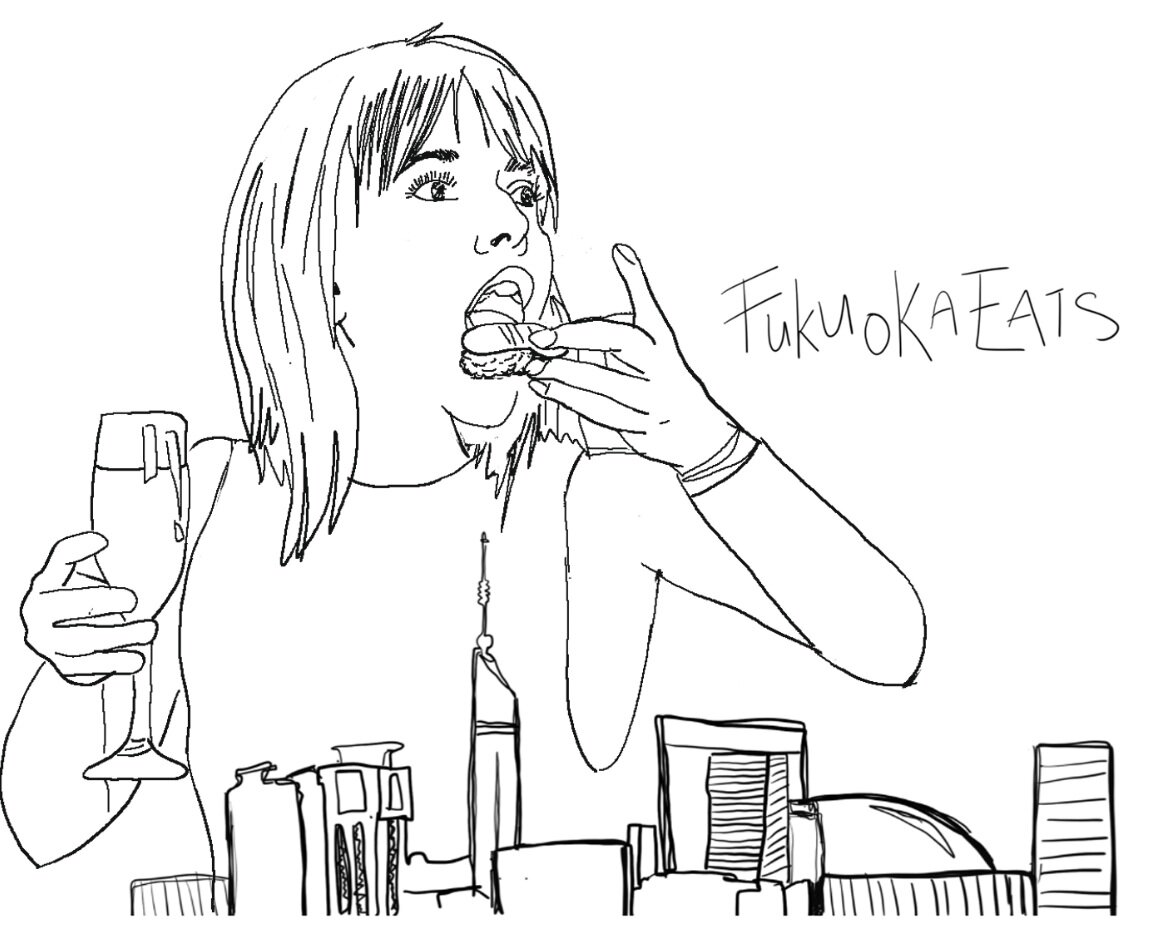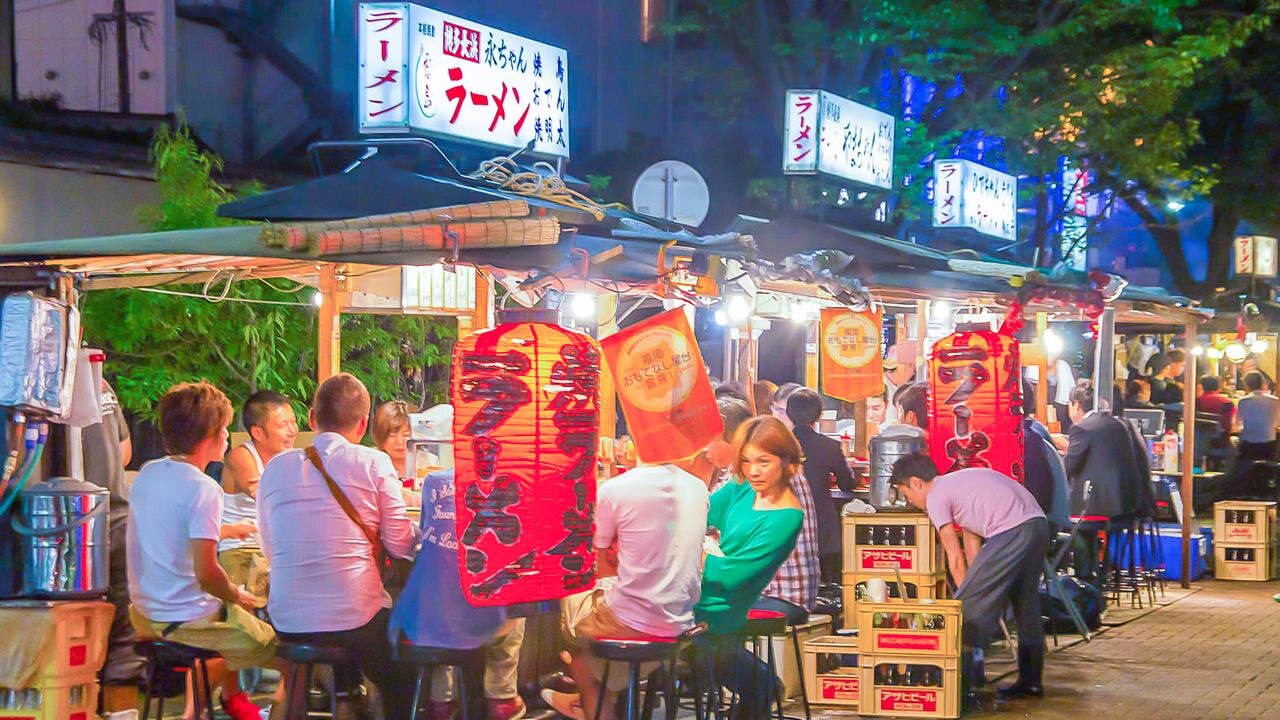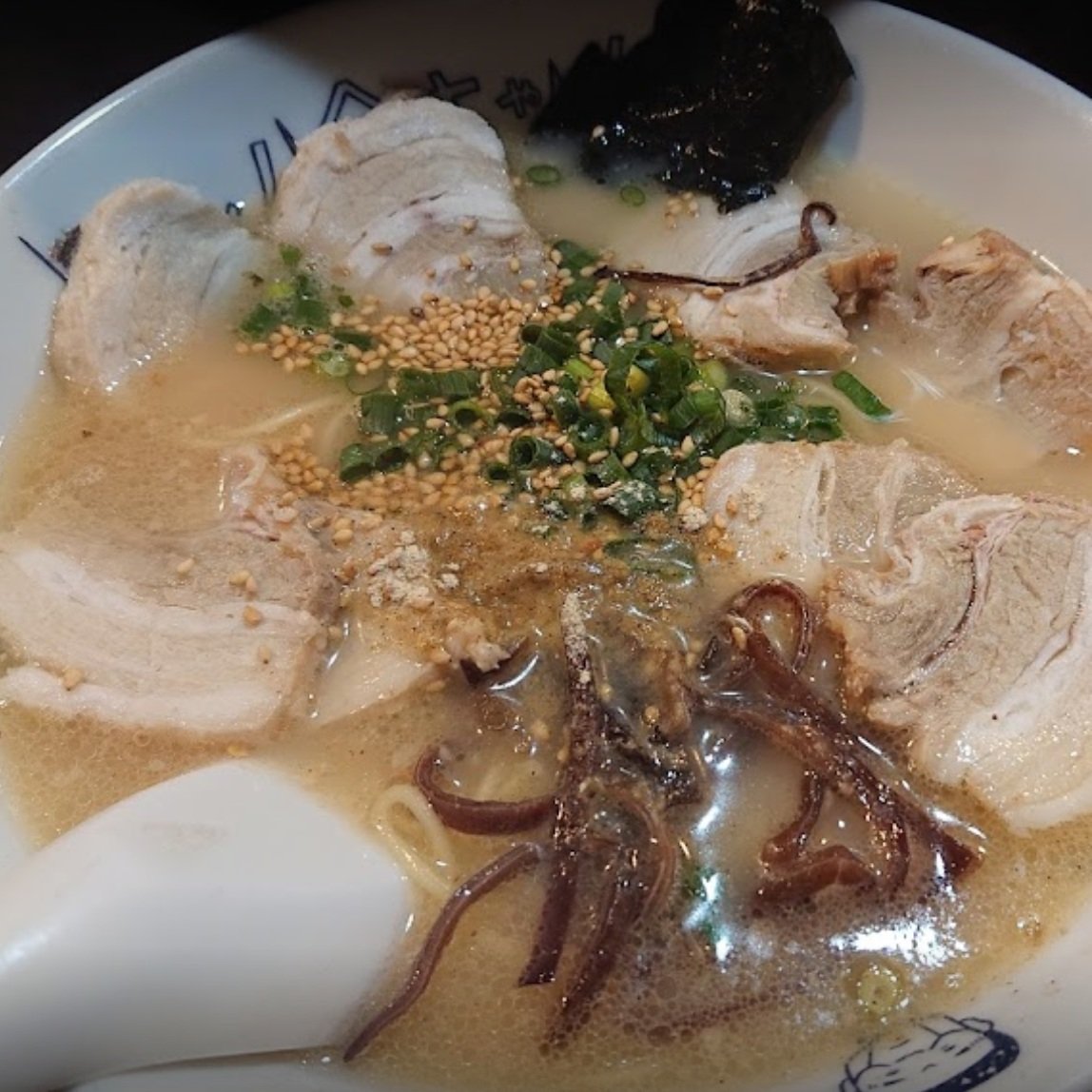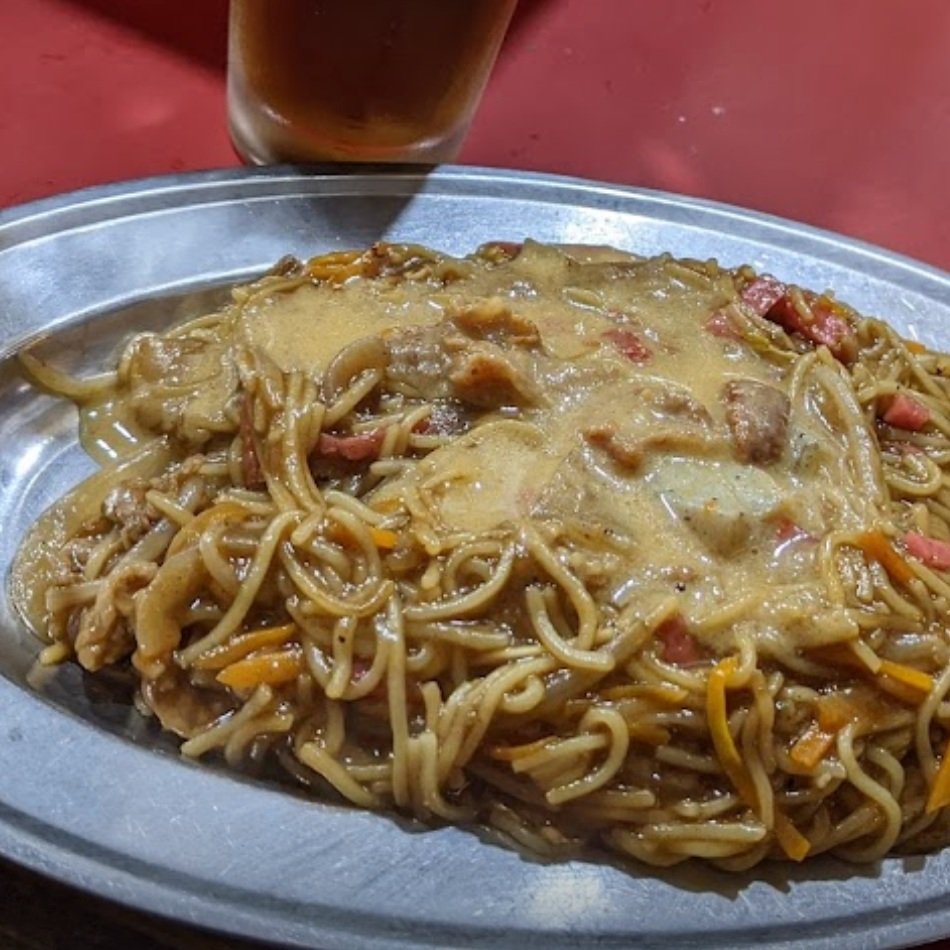Gotta Try ‘Em All! A Guide To Fukuoka’s Famous Yatai Food Stalls!
What are Yatai?
An iconic part of Fukuoka City’s food culture and nightlife, yatai food stalls are a must-try during any visit to the area. Seating roughly 7-10 people at a time, the mobile stalls line the streets of districts such as Nakasu, Tenjin, and Nagahama. Starting from around 6pm, the streets in these areas are lively with people lining up for the most popular stalls. Inside the tent-like stalls, diners squeeze between complete strangers and enjoy the delicious dishes while chatting casually with the stall owner and fellow patrons. Many yatai sell ramen, especially the local specialty Hakata ramen, but there are also other traditional Japanese eats such as yakitori (grilled chicken skewers), tempura, and gyoza dumplings. There are even some yatai, known as neo-yatai, that offer unique Western tastes such as pasta, coffee, and even escargot.
While yatai can be found all over Japan, over 40% of all stalls in Japan are found in Fukuoka! So, if you’re looking to enjoy the street food scene in Japan, Fukuoka City is the place!
Know Before You Go:
Because yatai has grown in popularity among visitors to Japan, many stalls now offer multilingual menus, and some staff can speak limited English. However, there are some important steps and manners to be aware of before visiting a yatai:
Ask to see the menu first. The menu for a yatai is displayed on the outside of the stall, with the prices listed next to each menu item (beware of yatai that don’t list the prices - this is against regulations!). Not every yatai offers every typical dish, so be sure to check first if you’re looking for something in particular.
Be prepared to line up. Some of the most popular stalls can have long queues, especially from Thursday through Saturday.
You’re gonna get cozy! Don’t be afraid to squeeze in next to someone you don’t know. Because seating is limited, it’s recommended to avoid going in large groups or with large bags. Limit your party to 4 people or less for a greater chance at grabbing a seat!
Don’t linger. While it may be tempting to sip your drink and take in the lively atmosphere, yatai is typically an eat-and-go experience. Patrons typically spend about 30-40 minutes at a yatai at most! Besides, hopping to different stalls and trying the specialties is part of the fun!
Don’t be shy! Yatai is a friendly and open atmosphere, so don’t be surprised if your neighbor strikes up a conversation with you. You can also feel free to ask the yatai staff for their recommended dishes with a simple osusume (oh sue-sue may) wo onegai shimasu (oh-nay-guy-she-masu)
Personal Tip: Although the most photogenic yatai area is along the river by Canal City, this is by far the most touristy, and the prices are very inflated compared to the yatai you will find lining the streets in Tenjin. If you are going for the photos and the experience, the riverside yatai are a nice one-and-done visit, but if you plan to visit multiple places, try many different foods, or have several drinks, your yen will go a lot further in Tenjin at the yatai in front of Daimaru.
Top Foods To Look For:
Gyoza
Always a safe choice, these thin-skinned meat dumplings are the perfect finger food for sharing with friends, or enjoying with a cold drink.
Oden
Tofu, vegetables, and meats stewed in a hot dashi broth - this is a popular comfort food in the winter that is light in flavor, and typically low in calories. Unsure where to start? Ask for daikon (radish), and try it with a side of mustard.
Ramen
The most obvious choice, found on most yatai menu, ramen can taste different from shop to shop. Some local patrons have their favorites, feel free to find yours too! (A word of warning though, this is a heavy dish and might not be suitable if you plan on eating at more than one place in one night.)
Mentai Dashimaki Tamago
Dashimaki Tamago is a well-loved traditional rolled Japanese omelet, and it’s common for pubs and yatai to serve it with fillings as an evening snack. This omelet is stuffed with mentaiko - Fukuoka’s famous cod roe (fish egg) in the center. Don’t let the description fool you, this savory, salty spicy dish is one worth trying.
Yaki-Ramen
You’ve heard of ramen noodle soup, but yaki-ramen is the noodle soup without the soup. Grilled on a teppan pan, this concentrated dish is packed full of flavor, and goes great with a cold beer.
Yakitori
Although “tori” typically means “bird”, these skewered meats can also include pork. Try ordering “butabara” for pork belly skewers, or “torikawa” for chicken-skin skewers. You may be served cabbage as a snack - you can definitely eat it too, so don’t let it go to waste!
Mentaiko
Cod roe is a well-loved ingredient in Fukuoka’s kitchen, and yatai are a great place to experience it. Try it grilled, or if possible, as a tempura dish (availability depends on the yatai). This spicy, salty fish egg snack is great for sharing with friends, or with a cold beverage.
Now that you know how to eat at a yatai, here are some recommended stalls to try in downtown Fukuoka City:
Recommended Yatai:
Kokinchan
Kokinchan, located on Showa-dori in Tenjin, is one of the most famous yatai in Fukuoka and is said to have started the trend of yaki ramen, or grilled ramen. Grilled ramen is similar to the local specialty Hakata ramen, as it is made with tonkotsu and extra thin noodles, but it is grilled and served without broth. Other unique Hakata specialties are available here, including doteyaki (beef sinew stewed in miso, sake and sugar) and mentai-tamagoyaki (pollock roe wrapped in a Japanese omelette). If you only have time for one yatai visit, Kokinchan can allow to you to experience the traditional and local side of yatai history and culture in Fukuoka! Plan to arrive early, on weekends and during peak dining times, you may be expected to line up!
Genkai
The second oldest yatai in Japan established over 70 years ago, Genkai sells mainly seafood tempura. The couple running the stall is warm and friendly, and expertly fries each and every piece of tempura to perfection. Through the owners and the regulars often inhabiting the stall, you can feel the kind of atmosphere that the Hakata area is well-known for. Order tempura piece-by-piece, or try the recommended tempura set or tendon (tempura over white rice). Pair your tempura with a beer to complete your meal. Despite the long and traditional history, an English menu is available here, so you can order with ease.
Yatai Mamichan
Ox tongue & omelets are house specials at this busy, classic Fukuoka-style yatai. Popular with foreigners and Japanese customers alike, this yatai is well-known for its warm service and inviting atmosphere. It can get busy, so if you’re visiting during a holiday or a busy weekend, be prepared to queue in line for a seat at the table, but with an English menu available inside, you won’t have to worry about what to order when you finally sit down!
Chez Remy
The first example of a neo-yatai on this list, is Chez Remy located on Watanabe-dori. The owner, Monsieur Remi Grenard, comes from France and is the first foreigner to own a yatai in Japan. He speaks French, English, and Japanese, so you can order comfortably in multiple languages. The stall prides itself on authentic French cuisine, including quiche, pumpkin gnocchi, beef steak, and wine. The quiche is typically safe for vegetarians too! The most iconic and popular menu item by far, however, is the garlic-butter escargot. Authentic and reasonably priced French delicacies easily accessible on the streets of Fukuoka.
Megane Coffee and Spirits
Another stall that is redefining the meaning of “yatai” is Megane Coffee and Spirits, which specializes in hand-dripped coffee, Japanese shochu, and other distilled liquors. That’s right – there’s no food at this yatai, not even ramen. The coffee is an original blend, carefully brewed with a refreshing aroma and taste. Can’t decide between a coffee or shochu? Then the ‘coffee shochu’ or ‘coffee whisky’ is the menu item for you. The stylish box-like stall is designed by a local architect and takes three whole hours to set up and take down! Because of this, Megane Coffee opens later than the typical yatai, at around 8pm.
Yatai Bar Ebichan
Yatai Bar Ebichan’s eye-catching exterior is reminiscent of a cozy, traditional bar with its patterned curtains, wooden counters, and a large selection of liquor on display. Another unique yatai offering mainly drinks, here you can enjoy cocktails and spirits along with a selection of appetizers while chatting casually with the staff and other diners. Unlike many bars in Japan, you are free to ask the bartender to make your drink exactly how you like it. The bartenders are extremely friendly, so feel free to ask them any questions about the area.
Did we miss anything important? Let me know your tips and recommendations in the comments below! I always love hearing when you’ve gone and tried any of my recommendations, so don’t hesitate to reach out to let me know if you’ve enjoyed something—or even if you didn’t! Your tips can help other travelers plan their itineraries when they come to visit, so all information is helpful!
































